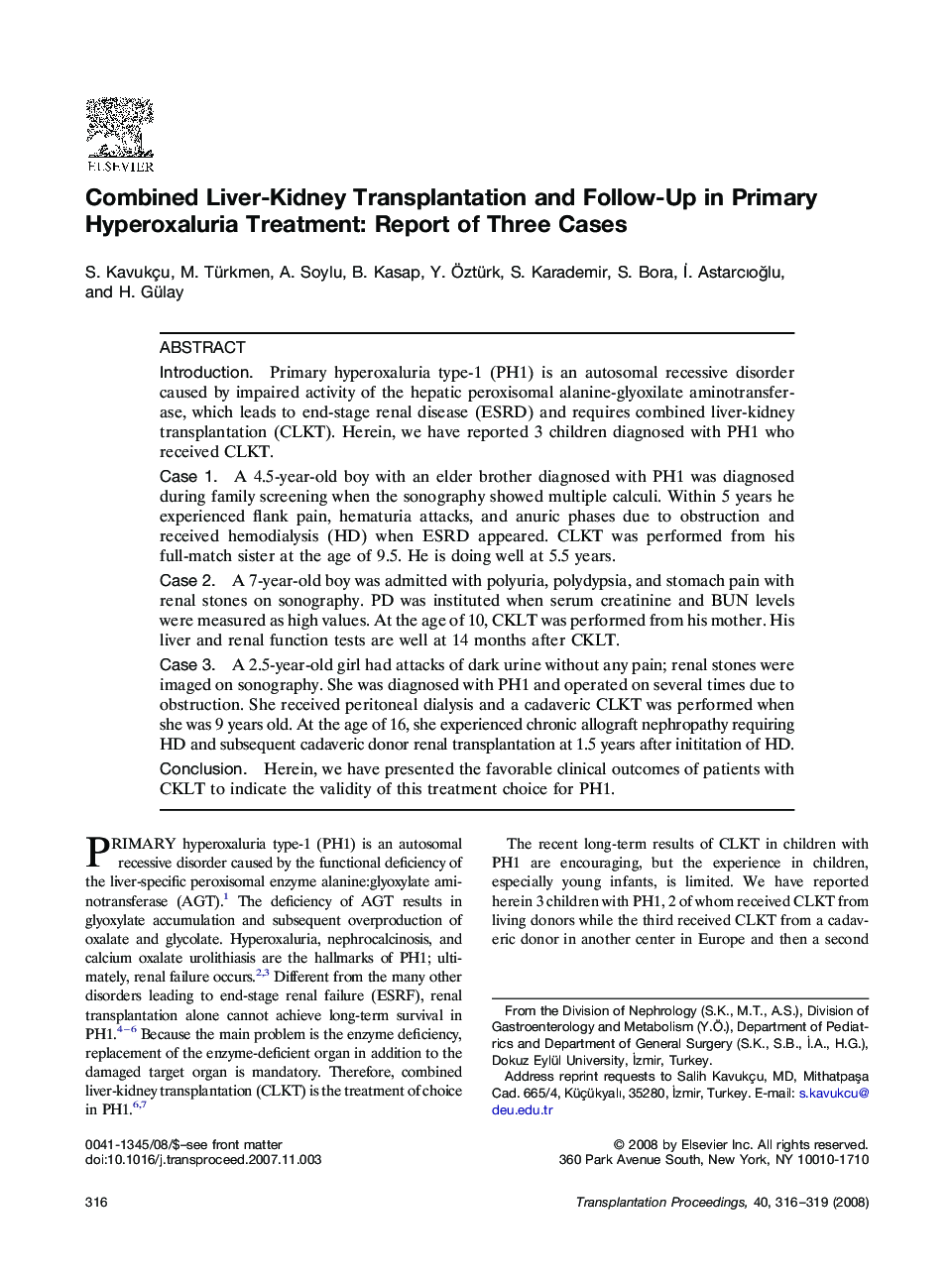| Article ID | Journal | Published Year | Pages | File Type |
|---|---|---|---|---|
| 4260495 | Transplantation Proceedings | 2008 | 4 Pages |
IntroductionPrimary hyperoxaluria type-1 (PH1) is an autosomal recessive disorder caused by impaired activity of the hepatic peroxisomal alanine-glyoxilate aminotransferase, which leads to end-stage renal disease (ESRD) and requires combined liver-kidney transplantation (CLKT). Herein, we have reported 3 children diagnosed with PH1 who received CLKT.Case 1A 4.5-year-old boy with an elder brother diagnosed with PH1 was diagnosed during family screening when the sonography showed multiple calculi. Within 5 years he experienced flank pain, hematuria attacks, and anuric phases due to obstruction and received hemodialysis (HD) when ESRD appeared. CLKT was performed from his full-match sister at the age of 9.5. He is doing well at 5.5 years.Case 2A 7-year-old boy was admitted with polyuria, polydypsia, and stomach pain with renal stones on sonography. PD was instituted when serum creatinine and BUN levels were measured as high values. At the age of 10, CKLT was performed from his mother. His liver and renal function tests are well at 14 months after CKLT.Case 3A 2.5-year-old girl had attacks of dark urine without any pain; renal stones were imaged on sonography. She was diagnosed with PH1 and operated on several times due to obstruction. She received peritoneal dialysis and a cadaveric CLKT was performed when she was 9 years old. At the age of 16, she experienced chronic allograft nephropathy requiring HD and subsequent cadaveric donor renal transplantation at 1.5 years after inititation of HD.ConclusionHerein, we have presented the favorable clinical outcomes of patients with CKLT to indicate the validity of this treatment choice for PH1.
